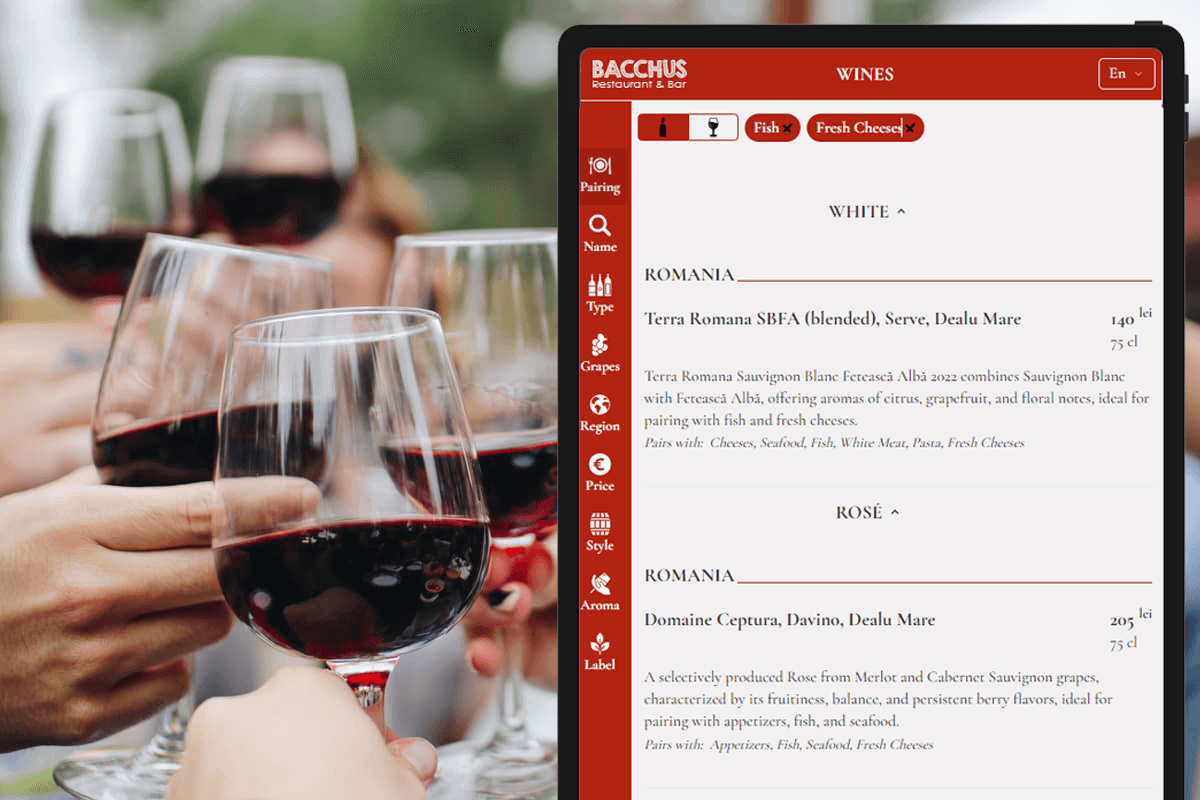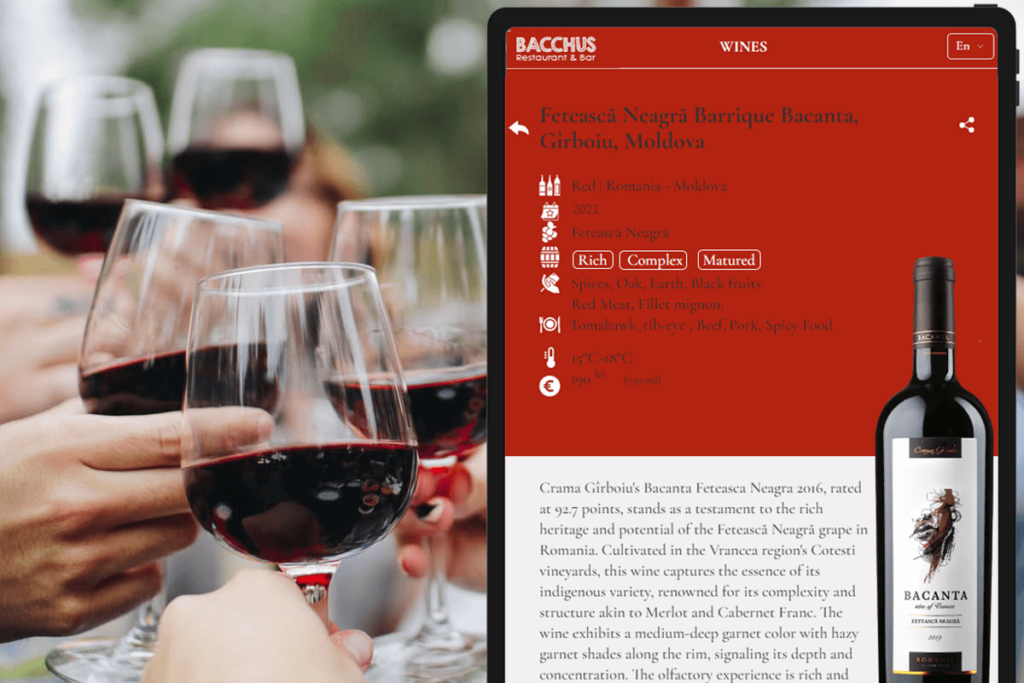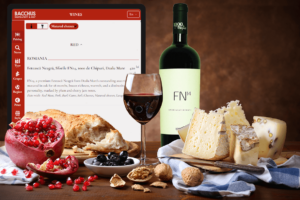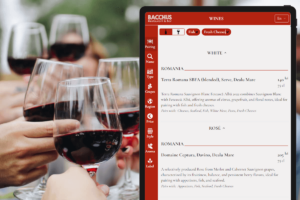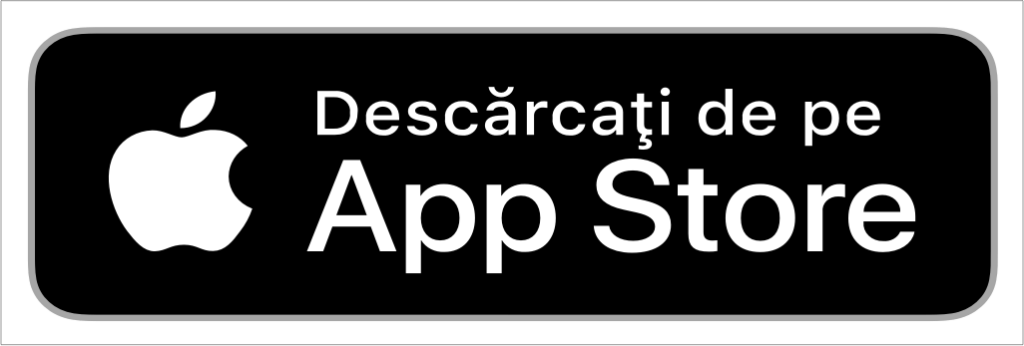Have you ever wondered how you could build your restaurant wine list?
Creating a well-curated wine list is vital for restaurants and wine bars aiming to enhance their dining experience and boost profitability. While the task can be daunting without a sommelier, understanding a few key principles can help develop a program that resonates with your brand and meets customer expectations, turning a good wine list into a great one.
How to build your restaurant wine list
1. Create a restaurant wine list consistent with your brand and clientele
Take into account the character and the identity of your restaurant
Tailor your wine list to reflect the essence of your establishment. For an Italian trattoria, this might mean a focus on Italian varietals, but incorporating a selection of international and local wines can add diversity and intrigue for your guests.
Know Your Customers
Leverage insights from your sales data and customer interactions to gauge preferences. This understanding should guide your wine choices to ensure they meet the expectations and spending habits of your clientele.
Focus on pairing the wine with food
The wines you select should complement and enhance your menu items. Whether pairing bold reds with hearty meats or crisp whites with seafood, each choice should be intentional and thoughtfully aligned with your dishes, enhancing the overall dining experience.
2. Make a balanced and strategic selection
Give your customers diversity and accessibility
Offer a range that includes different styles—red, white, rosé, and perhaps sparkling wines—ensuring there’s something for every palate. Mix powerful and more easy-drinking wines and include semi-sweet and/or sweet wines to propose a diverse and contrasting array of flavor profiles.
Make a local and a global selection
Feature local wines prominently if you are located within a wine-producing region to highlight regional specialties. Also, include well-chosen international wines to provide variety and cater to a wider audience.
Create an optimal inventory
There’s no set number for the ideal wine list, but a focused and well-thought-out selection typically works best. Aim for a mix that offers variety without overwhelming your guests or complicating your inventory management.
3. Implement pricing strategies and By-the-Glass offers
Maintain a transparent pricing
Maintain clear and fair pricing. A markup of 2-3 times the bottle cost is standard, but always consider what your market can bear and what fits with your restaurant’s positioning.
Add offers By-the-Glass
A significant share of wine sales comes from by-the-glass purchases. This option caters to customers who wish to sample different wines or who may not want a full bottle. It’s a practical way to increase sales and cater to more customers, encouraging them to try premium wines they might not otherwise consider. Usually, the glass pricing matches 80%-100% of your bottle purchasing cost.
Do you want to increase sales and optimize the management of your wine list? Contact us now at contact@wikoti.com or directly here to discover our innovative solution to create a digital wine list.
4. Adapt the wine list to the season and make dynamic updates
Make seasonal adjustments
Adapt your wine list to complement seasonal menu changes. Lighter wines in the summer and fuller-bodied options in colder months can align your offerings with customer preferences throughout the year.
Try dynamic updates
Continuously update and evolve your list. Introduce new finds, phase out underperformers, and keep the selection fresh and exciting for repeat customers.
5. Leverage the relationships with your suppliers and train your staff
Maintain good relationship with your suppliers
A good relationship with wine distributors and producers can ensure you have access to the best products and deals. This partnership is crucial for maintaining a dynamic and responsive wine list.
Educate your team
Ensure that all team members are knowledgeable about the wine list. Training should include details about the taste profiles, origins, and best pairings for each wine, empowering your staff to make recommendations that enhance the guest experience.
How to build your restaurant wine list - conclusion...
An effective wine program is a key component of a restaurant’s success, enriching the dining experience and encouraging customer loyalty. With thoughtful consideration of your restaurant’s identity, customer preferences, and strategic selection, your wine list can become a standout feature of your establishment.
Ready to enhance your wine sales and streamline your wine list management? Contact us to discover how our innovative digital wine list solution can transform your business, making your offerings more dynamic and accessible while increasing profitability.
Interested in further boosting your wine sales? Don’t miss our insightful post on „How to make your wine list sell more” for additional strategies and tips.
Schedule a demo today and see the difference our technology can make!
